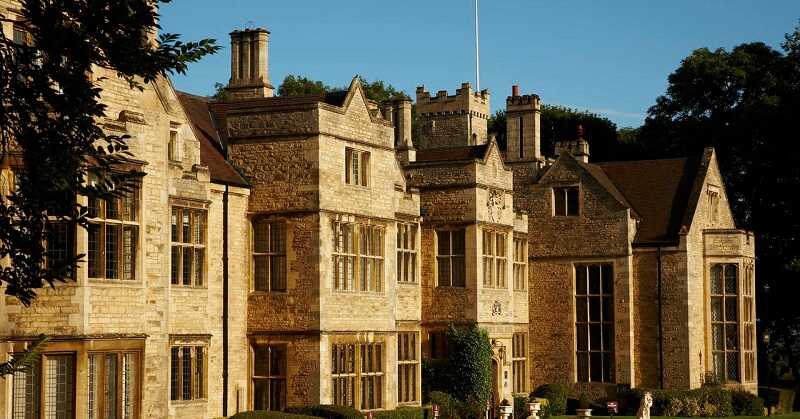It’s never been easier to check on a product or service before committing to buying or booking. With the internet in our pockets, even those of us still heading out to brick-and-mortar stores tend to check on our phones if a product is cheaper online, or if the review backs up its price-tag. It’s a sensible approach to be sure — removing some of the risks of parting with our cash for an item or booking that might not be as good as it originally looked.
This is particularly common for the hospitality industry. Very few people will commit to booking a table at a restaurant or a room at a hotel based purely on advertising. A study by TripAdvisor, entitled Path to Purchase, found that 33 percent of people from all around the world visit travel sites before booking. A further 74 percent of hotel purchasers head to TripAdvisor before committing to a booking.
And that’s just one website. The internet is overloaded with blogs and YouTube channels reviewing everything under the sun, and social media influencers can cause a product or service to sell out or book up in record time. With that in mind, has the traditional star-rating system faded from use?
Why We Have A Star-Rating System

Back in the day, a hotel’s star-rating formed the vast majority of a guest’s understanding of the premises before booking. The star system used to be quite simple and, without the digital word of mouth, really the only information guests had to go on. Now, the star system is as varied and unsettled as they come, with hotels claiming everything from five to ten stars instead of the traditional rating. This is down to the fact that there is no global star rating system.
The system was introduced to the UK in 1912 by the AA as a means to make hotel standards clear. Back then, the maximum number of stars was three. It wasn’t until 2006 that the AA developed the Common Quality Standards with the help of a number of UK tourist boards, which increased the maximum rating to five stars. Plus, in 1956, the AA introduced an additional Rosette Award scheme to ‘assess the quality of food served in restaurants and hotels’.
The Information From Star-Ratings
What hotels need as a minimum:
There’s a number of minimum requirements for hotels to be accepted into the AA star-rating system. These include:
- Planning compliance
- Equality Act 2010 compliance
- Food safety/hygiene compliance
- Safety and security minimum requirements
- This includes staff to be on-site and on-call 24-hours a day, printed instructions for emergencies in the night and for evacuation procedures in every bedroom.
- Symbols, diagrams, and multilingual emergency notices in every bedroom.
- Registered guests should have access to the hotel at all times, with the hotel entrance illuminated in the dark and identifiable. Lighting in all public areas, stairways, and landings.
- Telephone access 24-hours a day.
- A key or card for guests to lock bedroom doors inside and out, and security fittings on windows.
- Hotel Proprietors Act compliance
- Public liability insurance
- Fire risk assessment
- Licensing compliance
- Data Protection Act/GDPR compliance
- The Consumer Protection from Unfair Trading Regulations 2008 compliance
- Health and safety compliance
There’s also a basic level of maintenance expected. This covers fixtures, electrics, and gas equipment in the building being clean and fit for purpose. There’s also a minimum requirement for cleanliness, with the AA stating that there must be ‘a high standard of cleanliness maintained throughout the property’ regardless of star level — cleanliness is not expected to vary between star level.
How The Levels Differ

Once the basics are achieved, the difference between the one-star rating to the next can be quite broad. For example, where a one-star hotel is required to offer an iron and ironing board, a five-star hotel is expected to offer a 24-hour return laundry service. A one-star hotel can verbally explain the breakfast menu, where a two-star hotel must have a clean, well-presented menu provided for breakfast items. But then for dinner provisions, both one and two-star hotels (as well as three and four) all need to serve dinner at a specific time advertised, communicate if no dinner is provided, and can provide a self-service buffet. The only difference in dinner requirements is for five-star hotels, which need to provide all courses, served to guests at their table.
That’s not all there is to it. There’s a huge level of detail for the requirements of each level outlined in the full document, which can be accessed here. But just how relevant is it in this digital age?
Why The Star-Rating Doesn’t Always Work
The issue with star-ratings for a hotel is that there isn’t a worldwide system. Other countries run their own systems, with some having multiple different boards with their own star systems. Some hotels might even give themselves their own ‘unofficial’ star rating. A certain number of stars against a hotel in New York might not equal the same level of service from the same number of stars against a hotel in Newcastle! Then, there’s the matter of tour operators running their own star rating system, which can make four-star hotels look like five-star hotels to unsuspecting bookers.
The problem is apparent when looking at hotels within one country. Even within the UK, a hotel may have an AA two-star rating, but a tour operator may advertise it as three-stars based on their own rating system.
Why Reviews Are Increasing In Value
This is likely why guests are seeking out other guest reviews more and more. Plus, it seems there is an increasing level of trust in those online reviews and ratings. Not that this was always the case; back in 2009, C. Cox et al noted that while 95 percent of internet users at the time relied on online research as part of their travel information search process, few were actively trusting them as a primary means of gauging a hotel’s quality. This was deemed to be because ‘[it] is not always easy to identify and access the profile of people who post information on blogs and other social networking sites, [so] the reader cannot easily gauge the credibility of the information provided’ (pg. 749).
But fast-forward to the modern-day and this level of trust has skyrocketed. Reports show 84% of people place online reviews on the same level of trust as a recommendation from a friend. As mentioned at the start of this article, one of the main ways potential guests scout out hotels is to look on TripAdvisor, meaning they are placing a lot of value in the ratings there compared to the star-rating of a hotel.
Why Online Reviews Aren’t Completely Trustworthy
Of course, not every review is typed by an honest hand. It is as relevant now as it was in 2009; we simply do not know much about the person who rates or reviews a hotel on TripAdvisor and the like. In fact, there’s even a ‘fake review’ market presence in the digital world that is said to be able to get around the detection processes in place. So much so that one man managed to get a restaurant that doesn’t exist rated as the top restaurant in London.
So, Is There Still A Place For Star-Rating Systems?
If you can filter through the numerous other rating systems deployed and find the official AA star-rating for a hotel, this can be useful as a basis of information. By checking the minimum requirements set out by the AA, you can see the standards the hotel had to achieve to be granted not only entry to the star system at all, but the star level they have achieved. For example, the AA has rated The Majestic Hotel as a four-star hotel. You can take this and check their Common Quality Standard to find out that this means the hotel must provide such things as televisions with a screen larger than 24 inches, and a high degree of spaciousness within the rooms.
The AA’s star-rating system gives guests, at the very least, a basic foundation of what the hotel is offering. From there, a look at guest reviews can help to cement an idea of the experience, but with caution for the above-mentioned flaws for the online review process.
As with everything, it’s best to balance and not take everything at face value. Seeking out some reviews and some ratings will help glean the wider picture. Approached the right way, they can provide a keen insight into your potential booking. Just remember to check which stars are being shown!
Entertales is on YouTube, Click here to subscribe for latest videos and updates.














